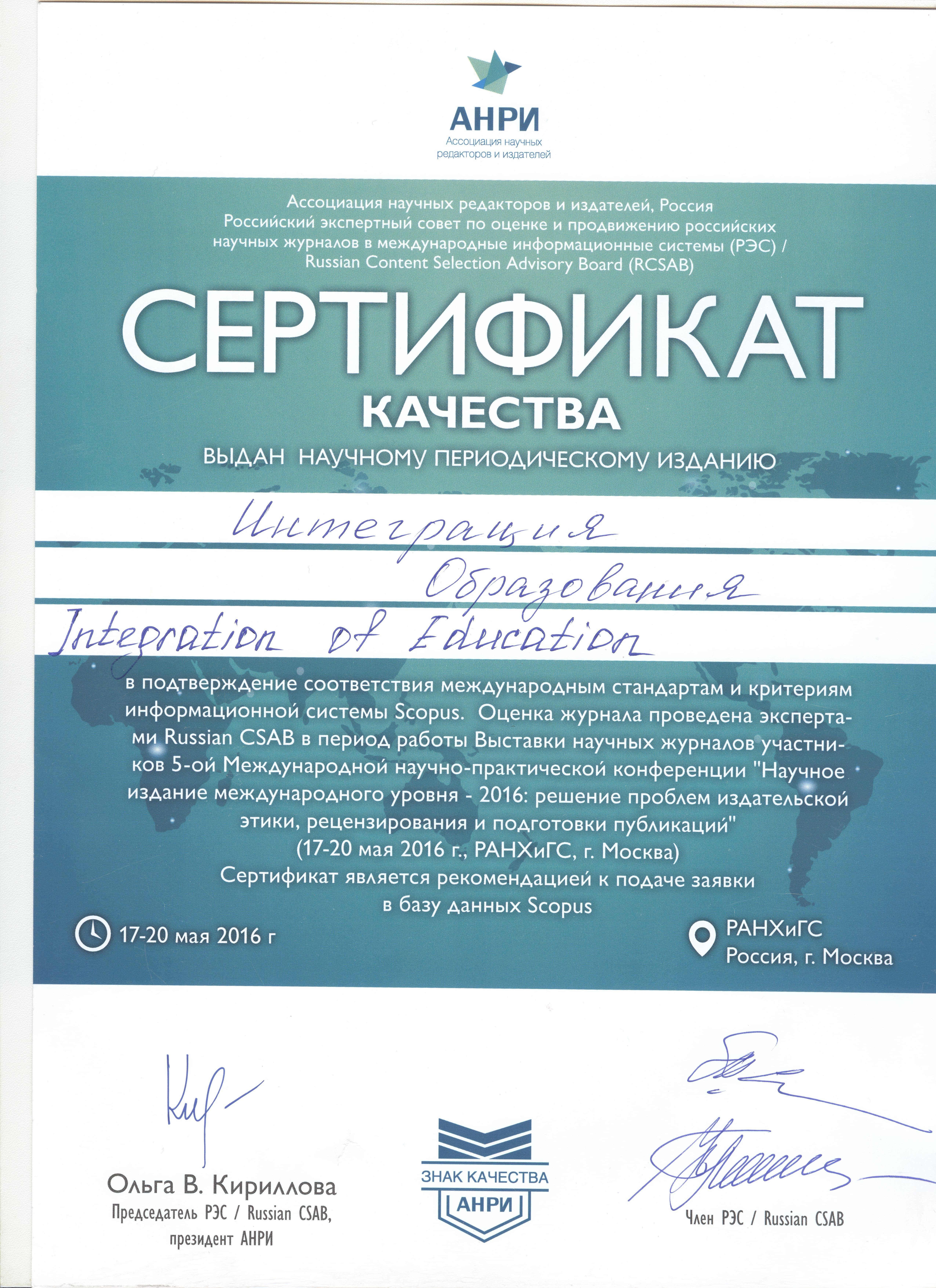UDK 378:004.92
DOI: 10.15507/1991-9468.101.024.202004.678-691
Assessing the Perception of Educational Content at Various Levels of Multimedia
Olga A. Zalata
Associate Professor of Normal Physiology Chair, V.I. Vernadsky Crimean Federal University (4 Prospekt Vernadskogo, Simferopol 295007, Russian Federation), Cand.Sci. (Med.), ORCID: https://orcid.org/0000-0003-0440-2405, Scopus ID: 8894901800, ResearcherID: ABF-1396-2020, This email address is being protected from spambots. You need JavaScript enabled to view it.
Yulia A. Eremenko
Associate Professor of Marketing, Trade and Customs Affairs Chair, V.I. Vernadsky Crimean Federal University (4 Prospekt Vernadskogo, Simferopol 295007, Russian Federation), Cand.Sci. (Econ.), ORCID: https://orcid.org/0000-0003-2524-1145, This email address is being protected from spambots. You need JavaScript enabled to view it.
Introduction. The development of information technologies and innovations in education calls for the need for an objective assessment of their impact on cognitive processes, psychological and physiological reactions of students. The aim of the study is to assess the influence of the level of multimedia on the effectiveness of training, as well as the psychological and physiological state of students, which characterizes the comfort/discomfort of being in an educational environment.
Materials and Methods. Qualitative data analysis methods are: pre- and post-tests after the experience of perceiving educational content at various levels of multimedia to measure the learning outcomes of the experiment participants. Psychodiagnostic methods are: Ch. Spielberger's questionnaire modified by Yu.L. Khanin (level of personal and situational anxiety) for measuring the level of situational anxiety (ST) before and after the training stage. Questionnaire SAN by Yu. Doskin (state of health, activity, mood) was used for evaluating the level of SAN (before and after the training stage). Evaluation of endogenous time was done by counting by the duration of an individual minute (before and after the learning stage). An adapted version of the Dissociative Experience Scale was used for measuring mood before and after the learning phase. Physiological methods are the hemodynamic parameters.
Results. Analysis of the findings adduces to best learning in an immersive environment, which is confirmed by the results of pre- and post-testing, apart from that, interaction in a virtual environment facilitated the increase in the index of positive emotions and decreased the level of situational anxiety. The study of students’ physiological reaction in this environment revealed insignificant fluctuations in hemodynamic parameters ‒ an increase in systolic and diastolic blood pressure, which may adduce to the activation of the sympathetic tone of the autonomic system, providing a stress response, in our case, to a new format of training. The least psychologically comfortable environment for learning was the linear multimedia environment (video presentation) which caused a statistically significant increase in the level of anxiety and a decrease in the duration of an individual minute. Staying and studying in the hypermedia environment was comfortable for students, moderately increasing the index of positive and statistically significant decreasing the index of negative emotions, as well as a decrease in blood pressure. The latter may be indicative of a decrease in the degree of tension in the sympathetic part of the nervous system of the respondents who were in the hypermedia environment.
Discussion and Conclusion. The article will be of interest to teachers who use innovative technologies in their practice, to developers of educational content in the virtual reality or hypermedia environment, as well as to government authorities that make strategic decisions regarding innovative approaches to education.
Keywords: educational content, multimedia, hypermedia, immersive environment, learning, physiological and psychological research methods
For citation: Zalata О.А., Eremenko Yu.А. Assessing the Perception of Educational Content at Various Levels of Multimedia. Integratsiya obrazovaniya = Integration of Education. 2020; 24(4):678-691. DOI: https://doi.org/10.15507/1991-9468.101.024.202004.678-691
Contributions of the authors:
Olga A. Zalata – statement of the research problem; design of the experiment; data collection; critical analysis and clarification of conclusions.
Yulia A. Eremenko – development of a questionnaire; statistical processing of results; visualization; literature review and conclusion making.
All authors have read and approved the final manuscript.
Submitted 02.07.2020; revised 22.09.2020; published online 31.12.2020.

This work is licensed under a Creative Commons Attribution 4.0 License.





























